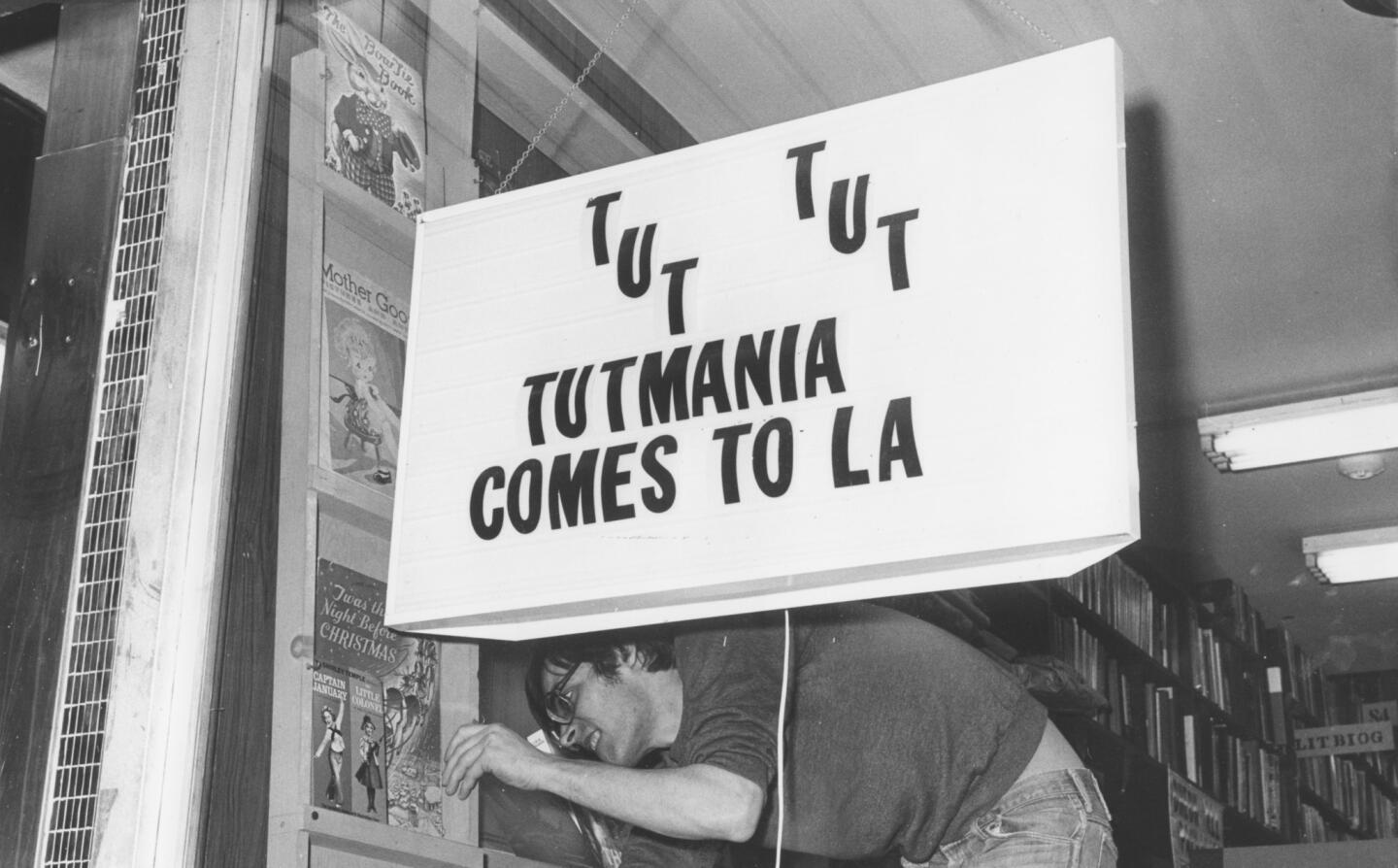A look into the history of King Tut and Los Angeles
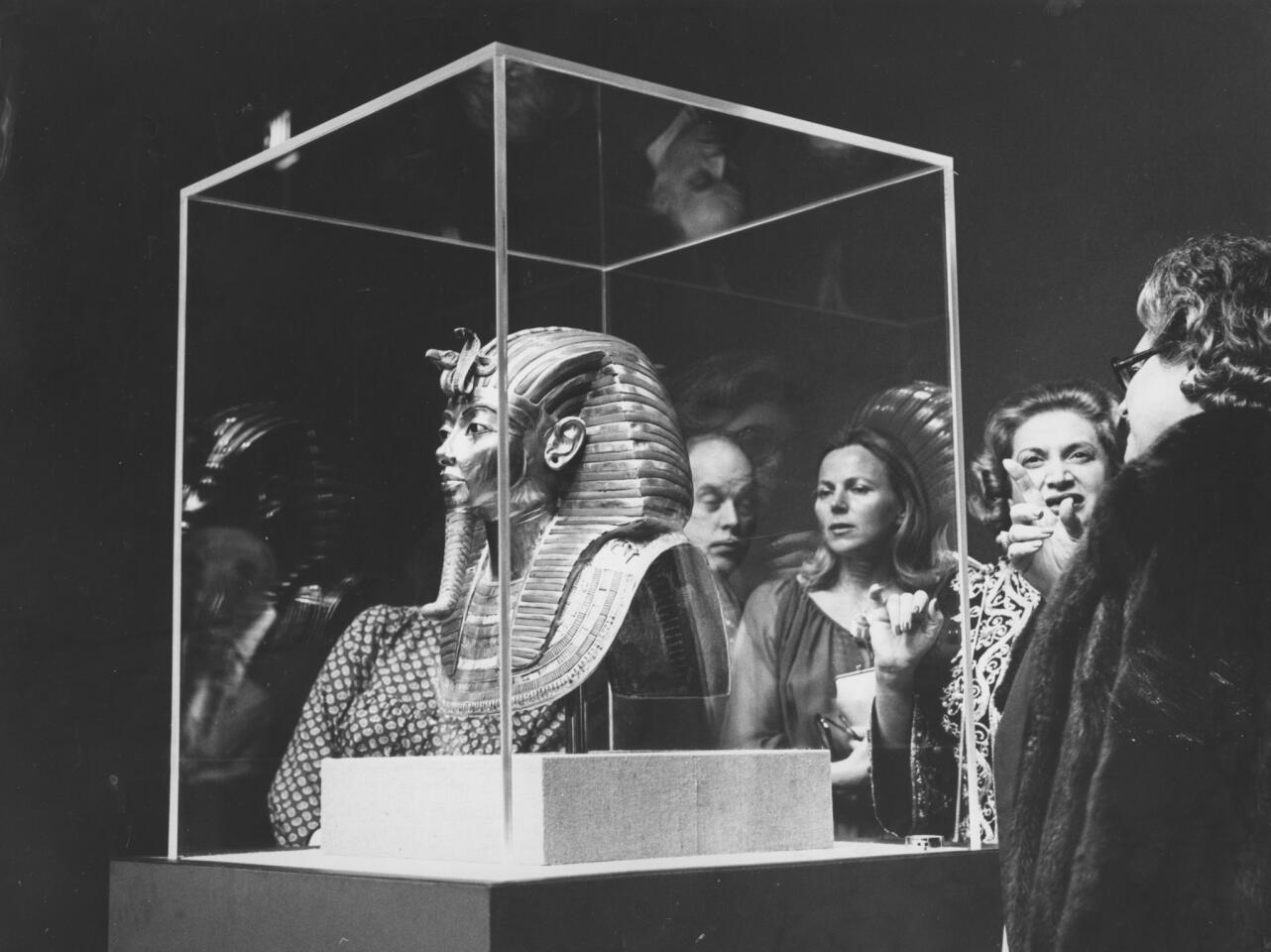
Tutankhamun’s funerary mask, made of beaten and burnished gold, was on view at the Los Angeles Museum of Art in 1978.
(Mary Framton / Los Angeles Times)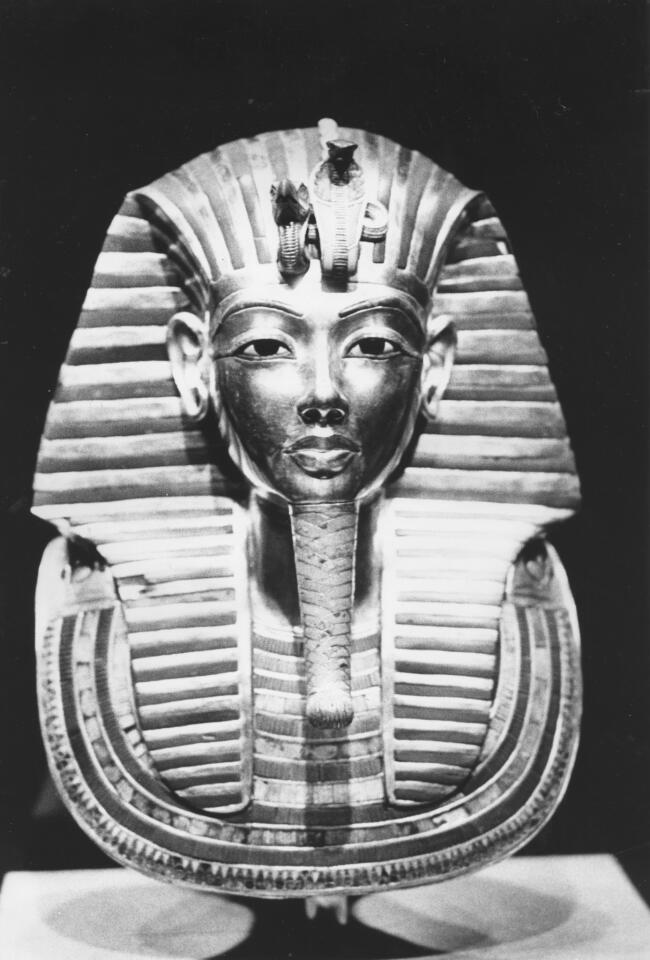
Tutankhamun’s funerary mask, made of beaten and burnished gold, was on view at the Los Angeles Museum of Art in 1978.
(Whitney Fitzgerald / Los Angeles Times)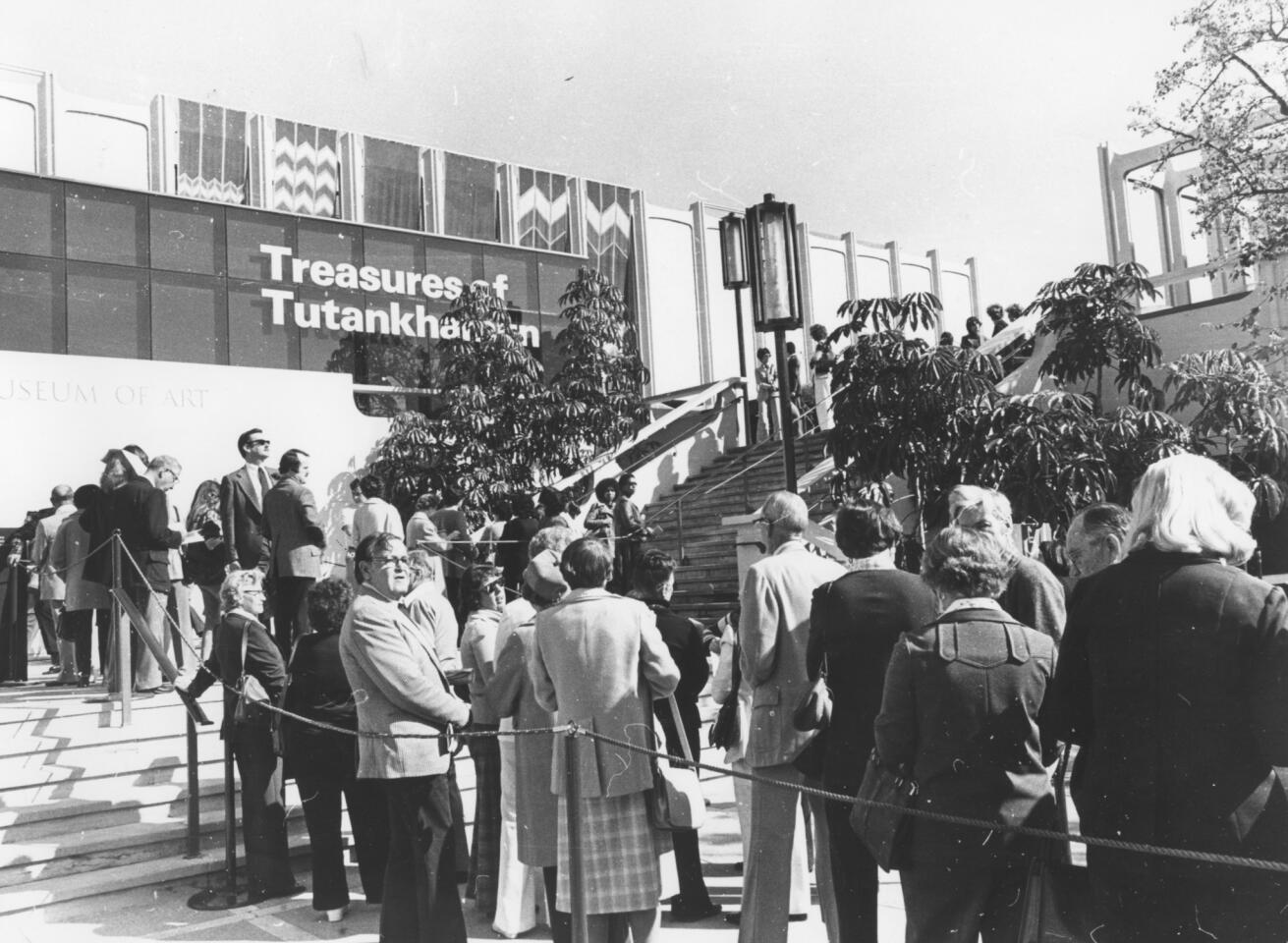
Crowds gather at “The Treasures of Tutankamun” exhibit at the L.A. County Museum of Art in 1878.
( Los Angeles Times / Los Angeles Times)Advertisement
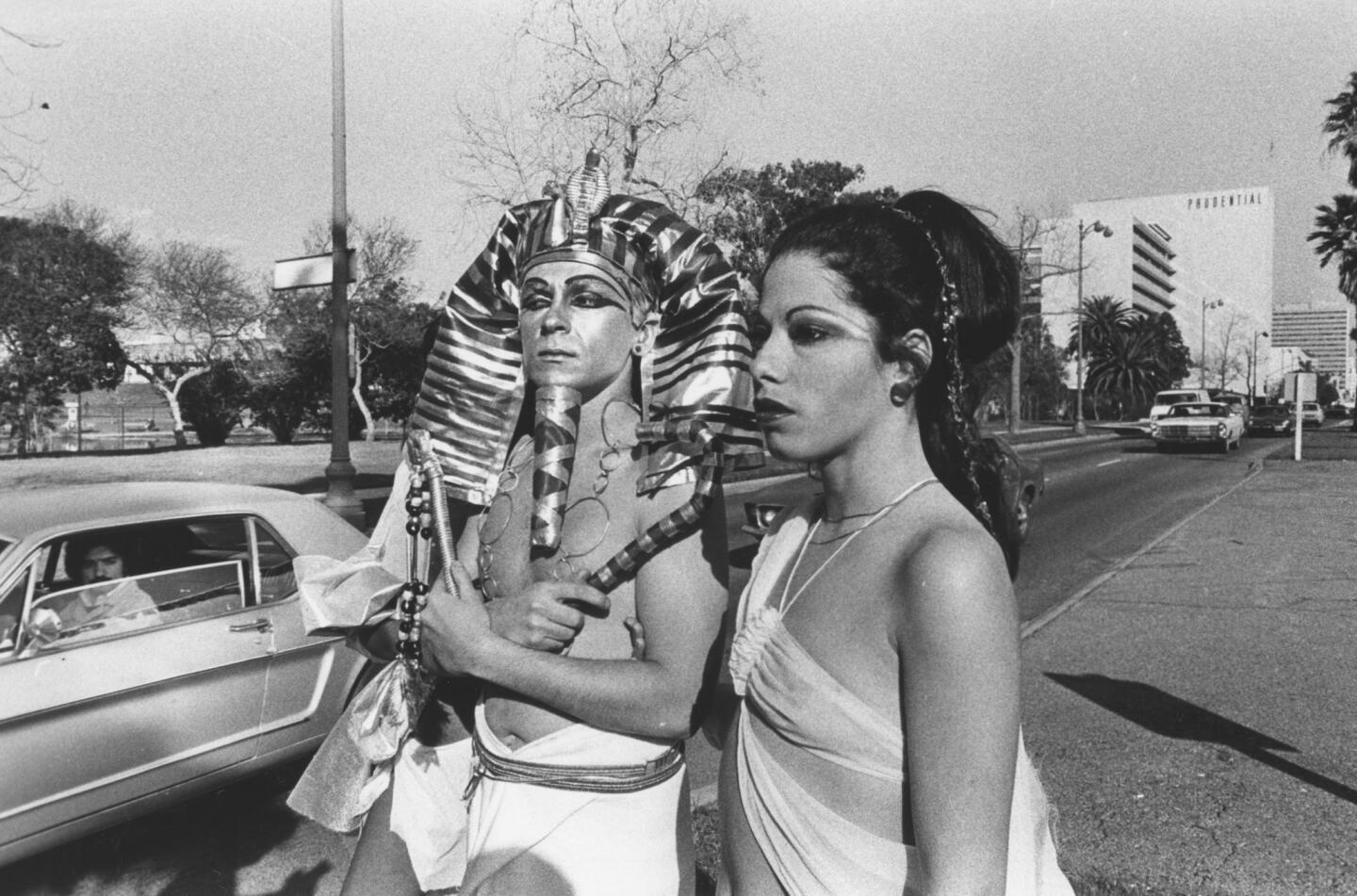
Crowds gather at “The Treasures of Tutankamun” exhibit at the L.A. County Museum of Art on March 8, 1978.
(Los Angeles Times / Los Angeles Times)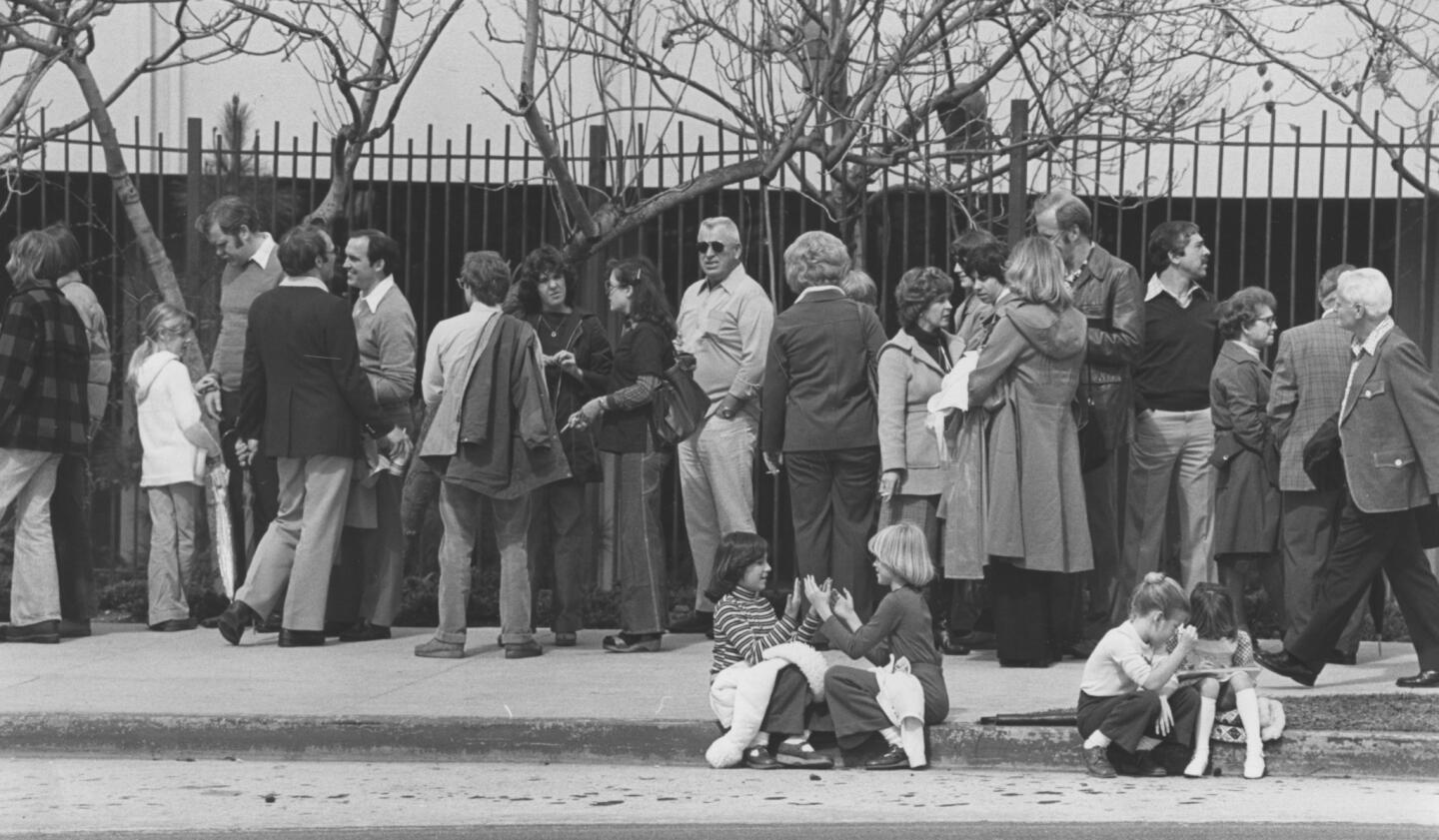
Crowds gather at “The Treasures of Tutankamun” exhibit at the L.A. County Museum of Art on March 8, 1978.
(Larry Armstrong / Los Angeles Times)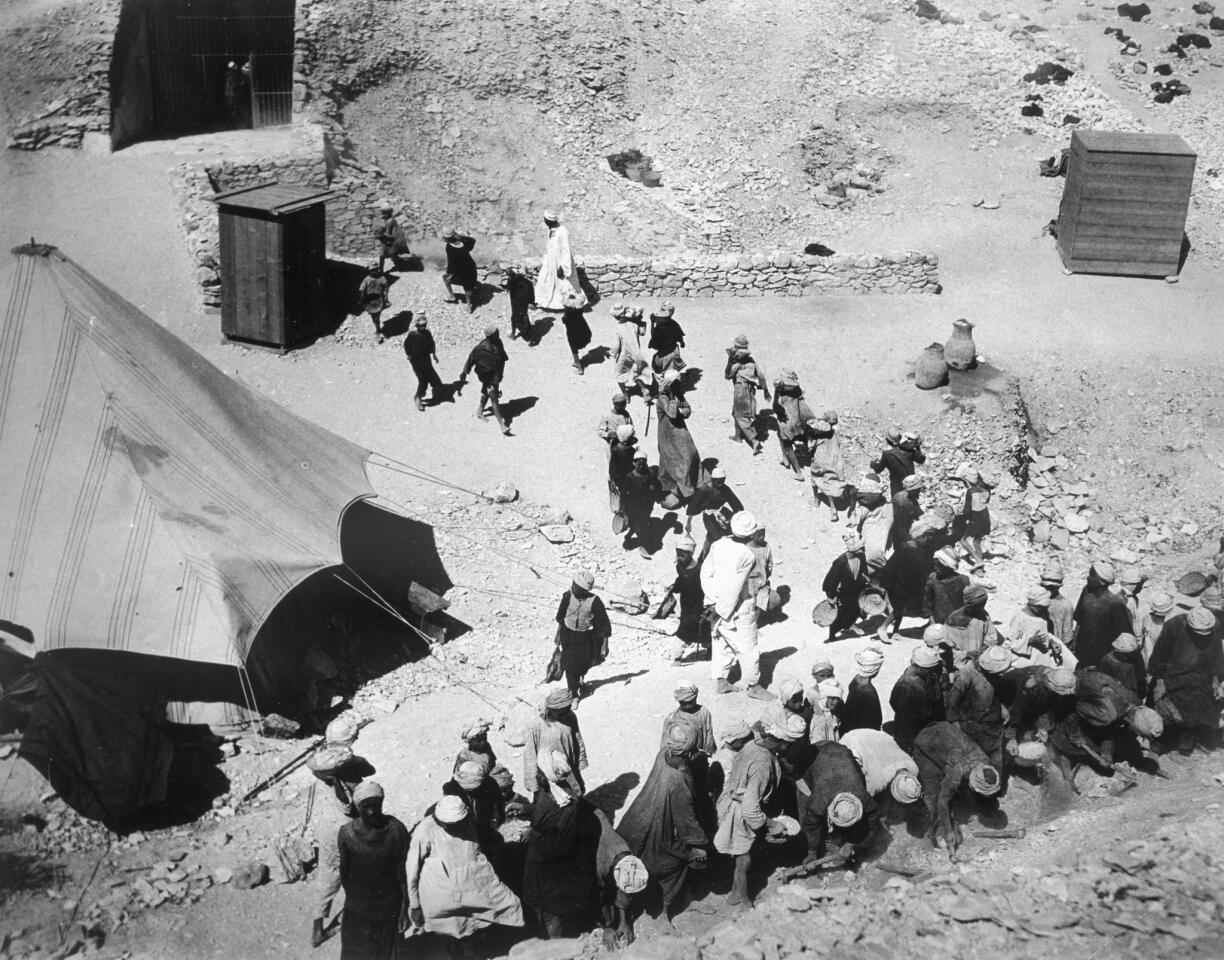
Closing the Tomb of Tutankhamun, Valley of the Kings, Egypt, in February 1923. The discovery of Tutankhamun’s tomb in 1922 by British archaeologist Howard Carter (1874-1939) was one of the most astounding discoveries in archaeology. Tutankhamun was a previously unknown pharaoh whose name had been eradicated from historical records by one of his successors because of his association with the heretical pharaoh Akhenaten, who was Tutankhamun’s father-in-law. Consequently his tomb, uniquely, had remained undisturbed by grave robbers.
(Heritage Images / Getty Images)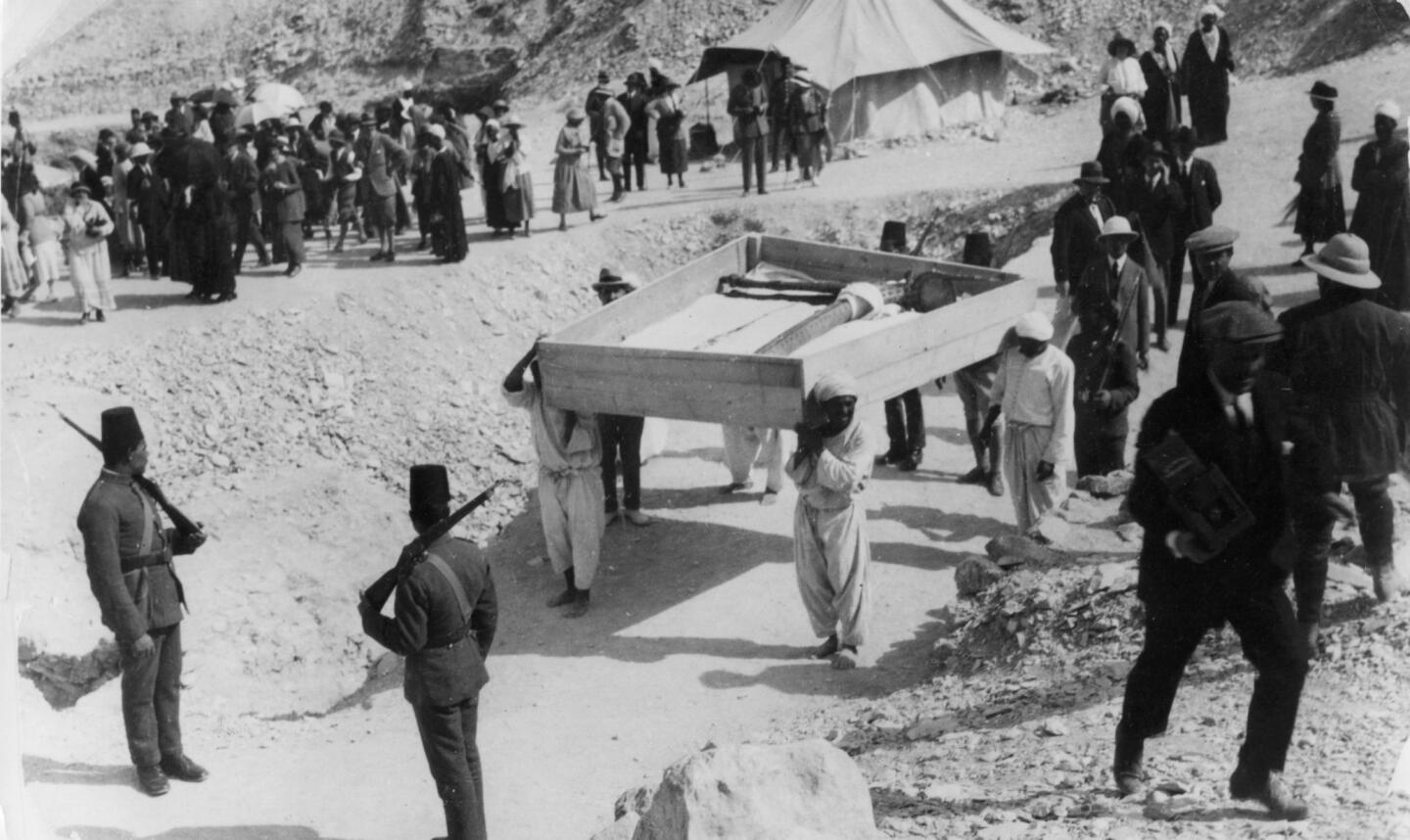
Soldiers watch treasures being removed from Tutankhamen’s tomb in 1923.
(Hulton Archive / Getty Images)Advertisement
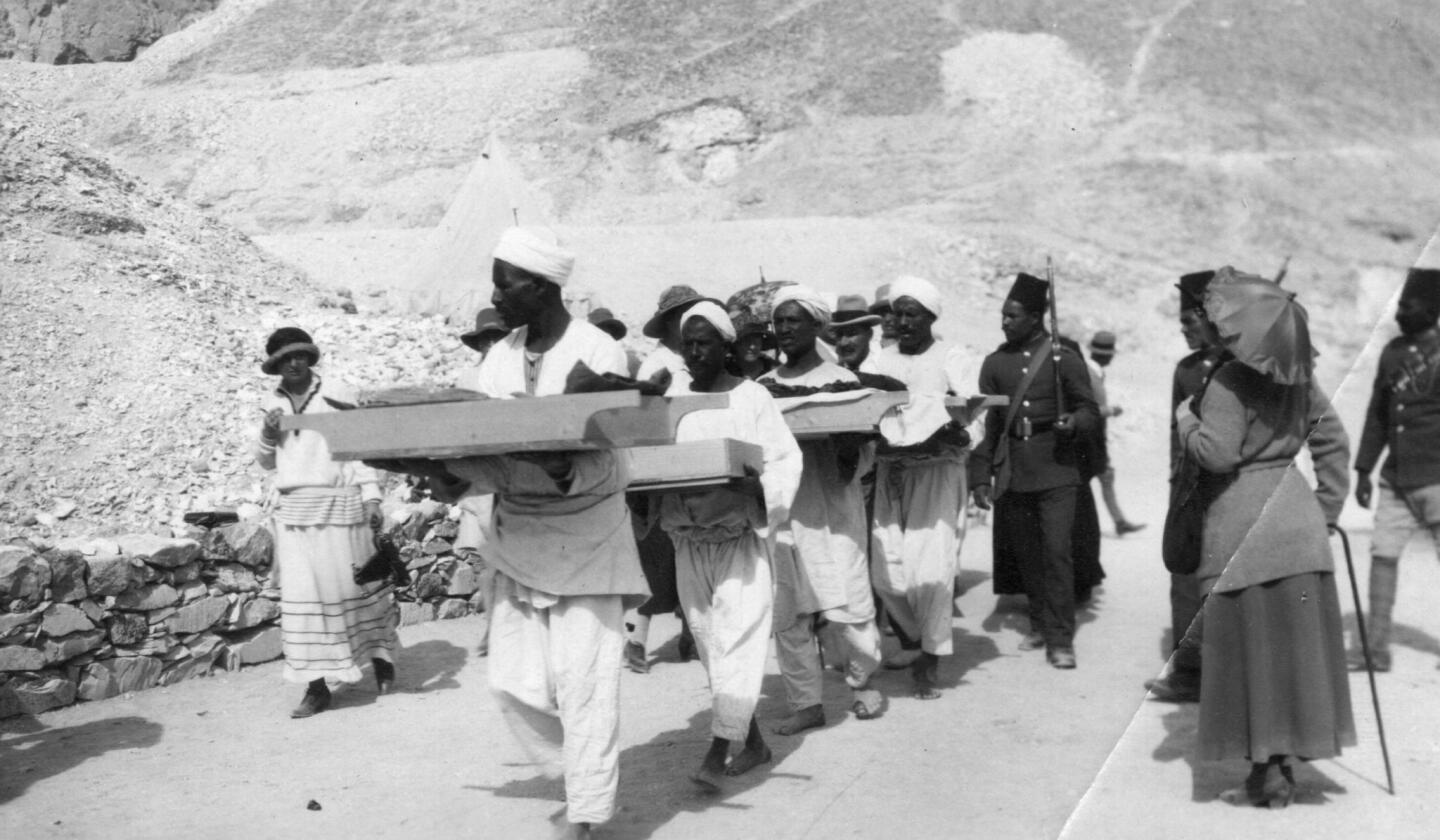
Bearers remove objects from the tomb of King Tutankhamen in the Valley of the Kings near Luxor in February 1923.
(Hulton Archive / Getty Images)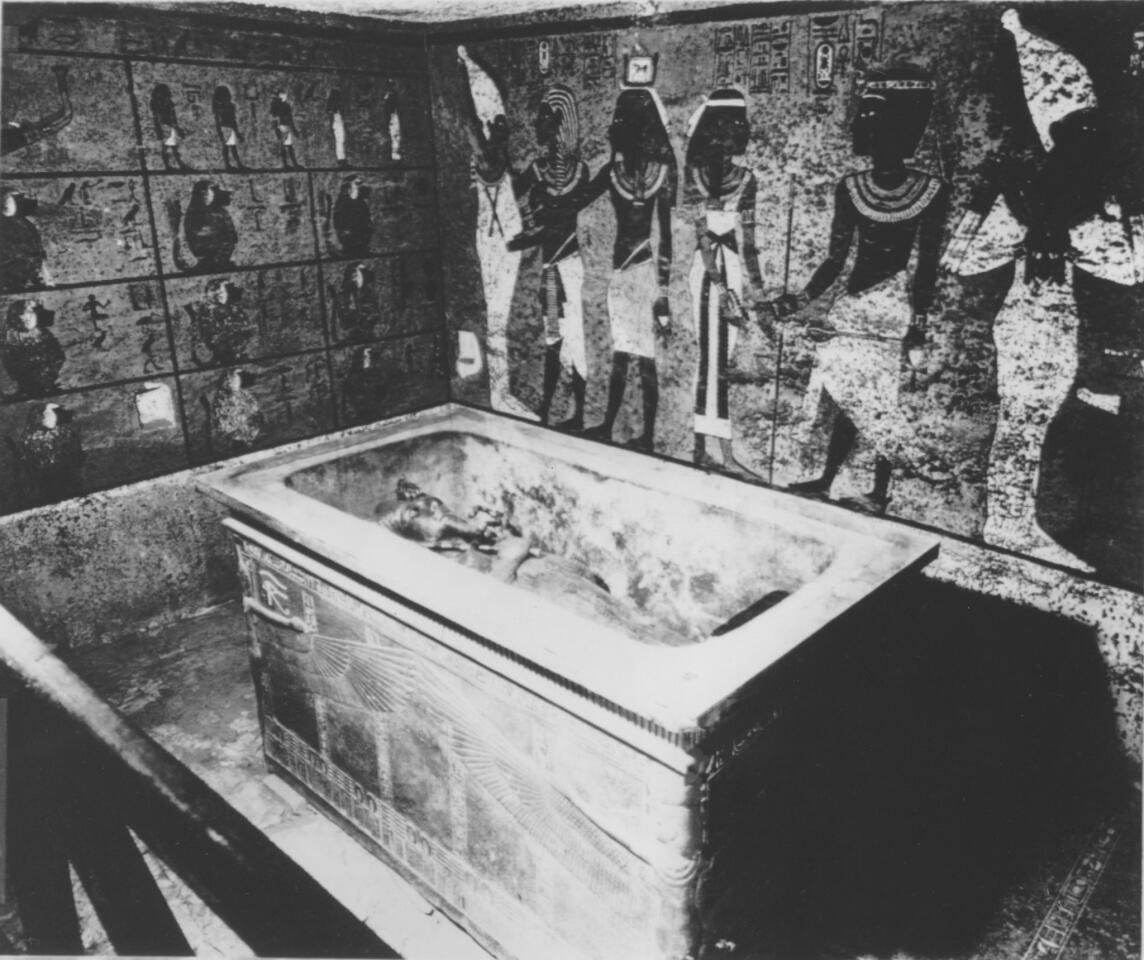
The mummy of King Tut-Ankh-Amen is shown in his coffin in the tomb where it was discovered in Egypt in 1922.
(AP Wirephoto / AP Wirephoto)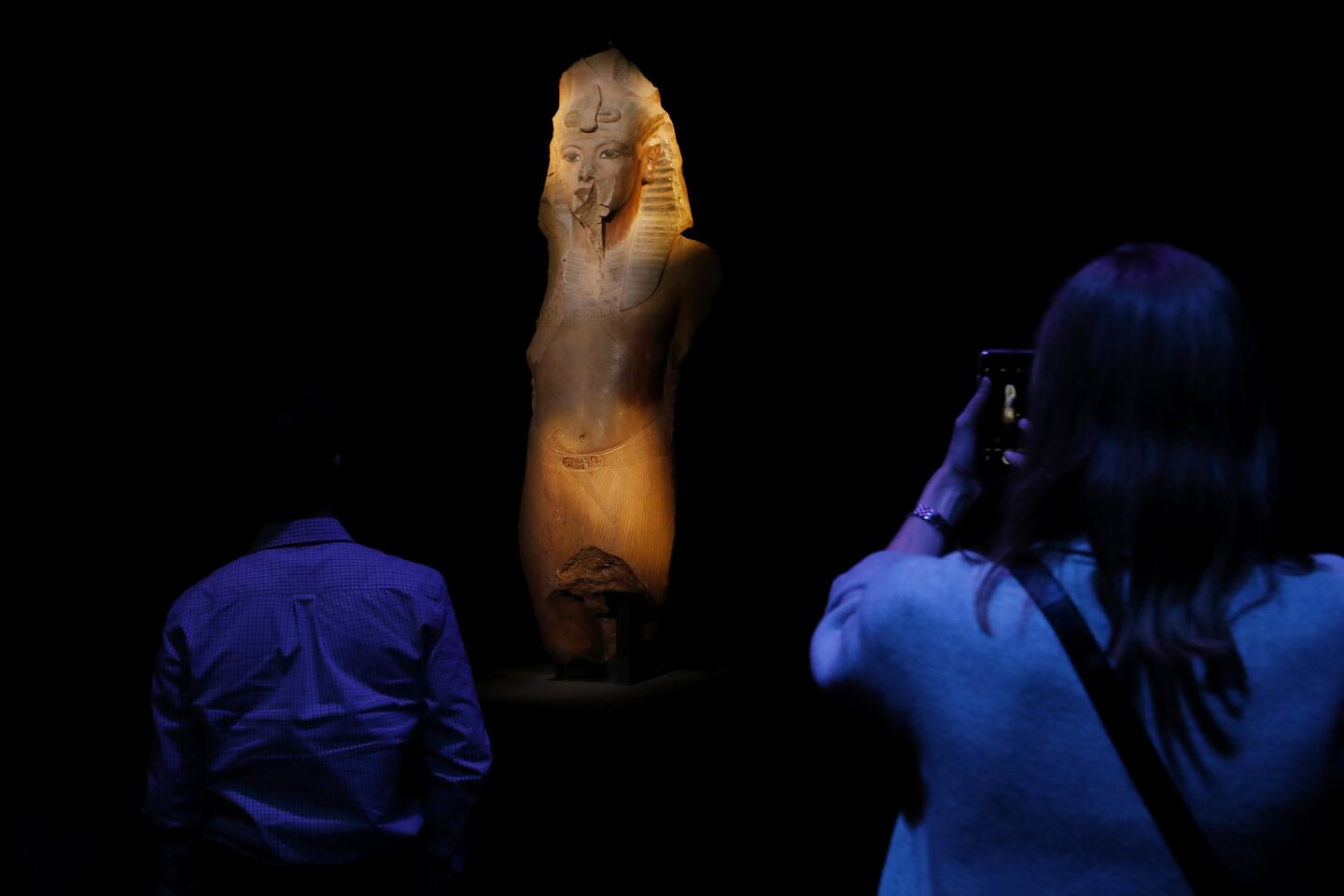
A quartzite statue of the king on display at the “King Tut: Treasures of the Golden Pharaoh exhibit at the California Science Center in Los Angeles.
(Gary Coronado / Los Angeles Times)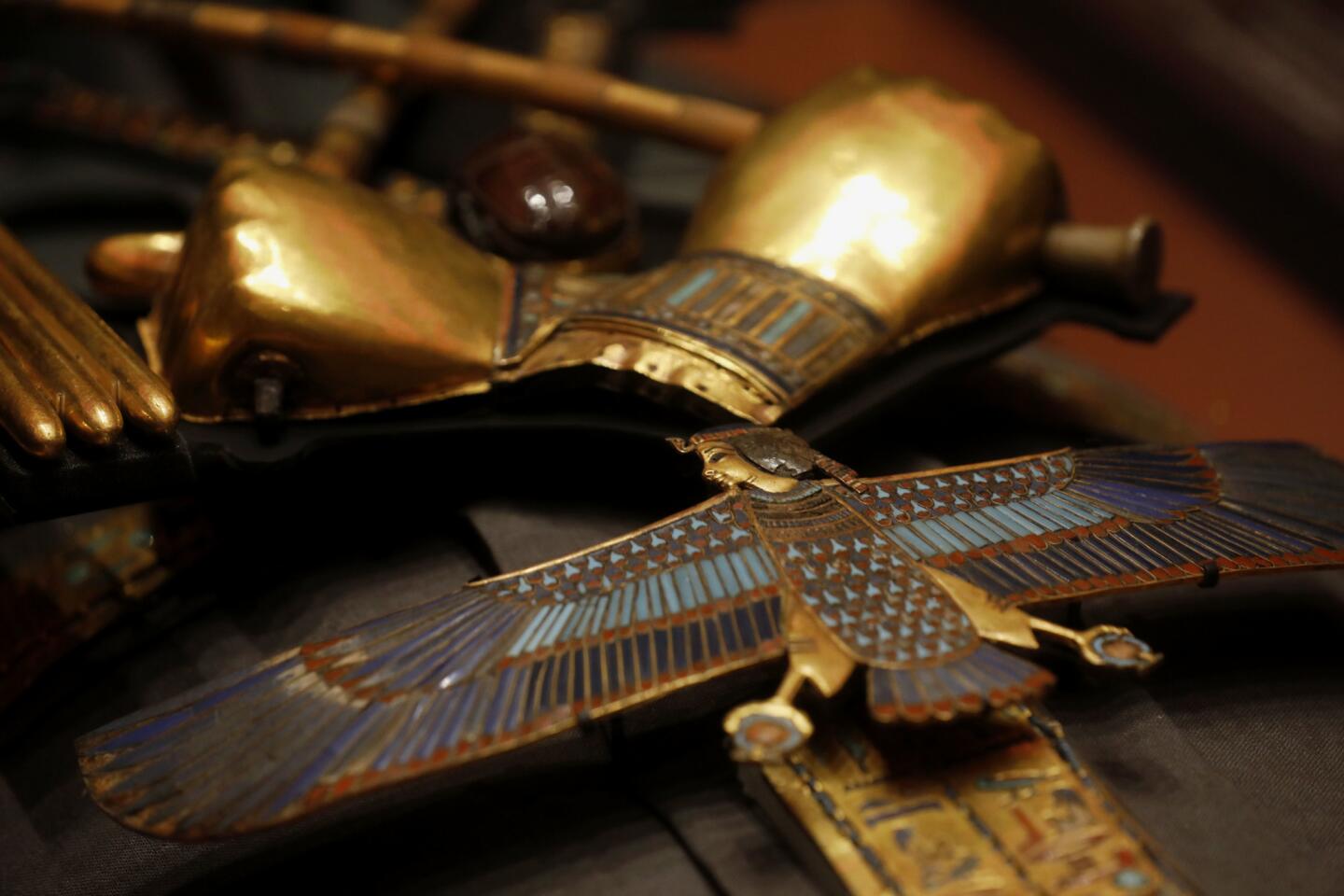
Ornate jewelry and bands that wound around the linen of the mummy on display at the current exhibit.
(Gary Coronado / Los Angeles Times)Advertisement
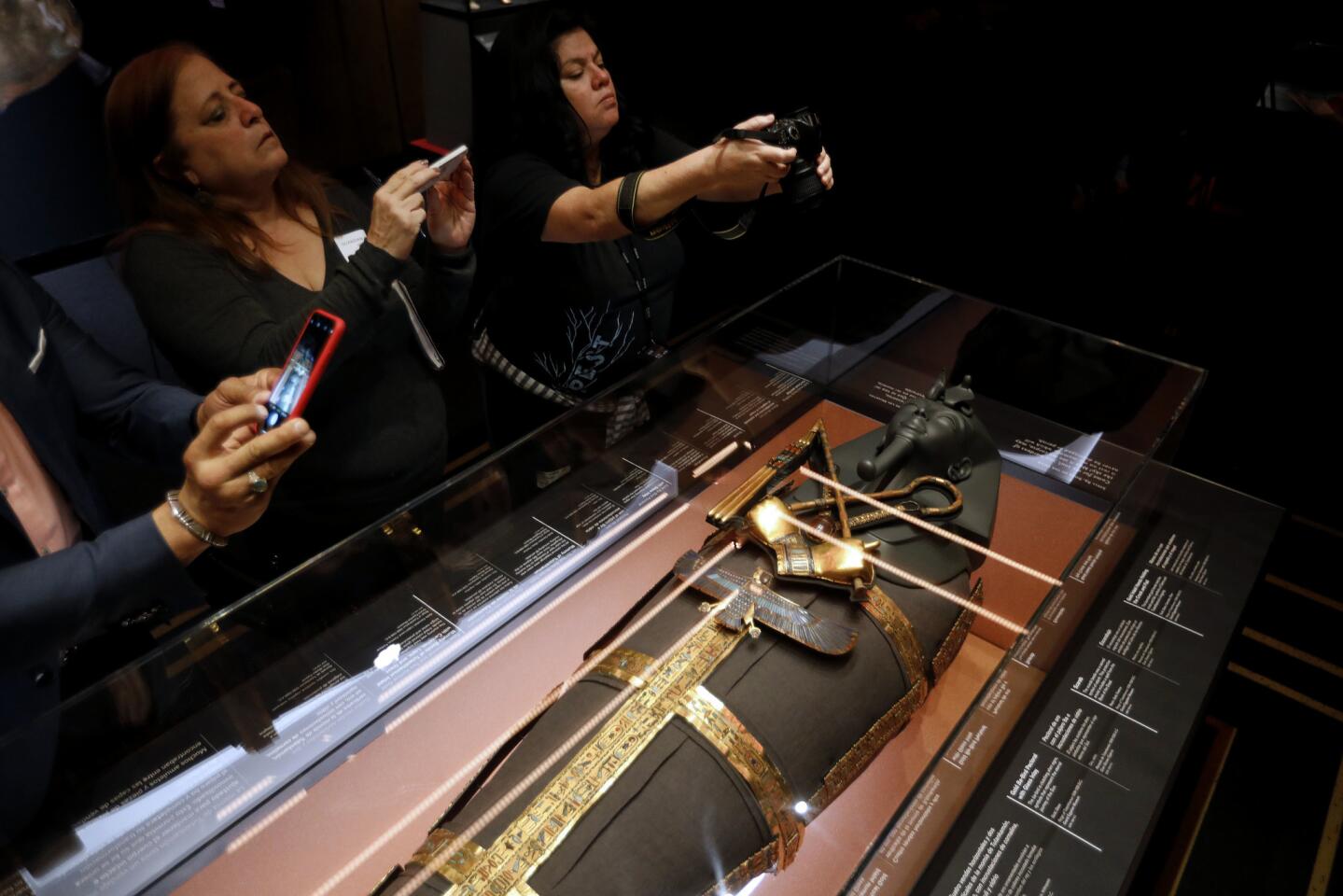
Guests photograph ornate jewelry and bands that wound around the linen of the mummy on display at the current exhibit.
(Gary Coronado / Los Angeles Times)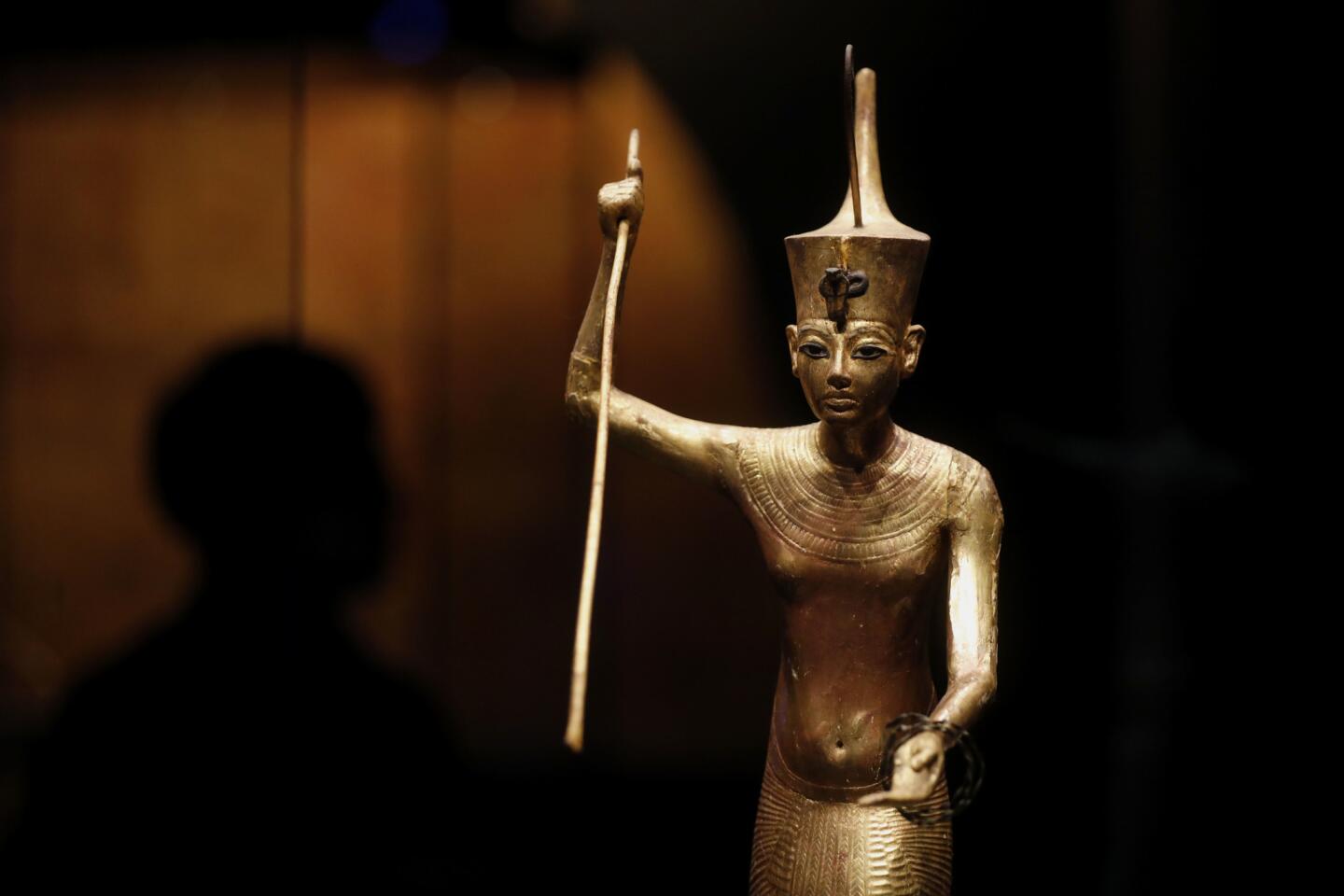
Gilded wooden figure of Tutankhamun on a skiff, throwing harpoon; wood, gesso, gold leaf, bronze, on display at the current exhibit.
(Gary Coronado / Los Angeles Times)